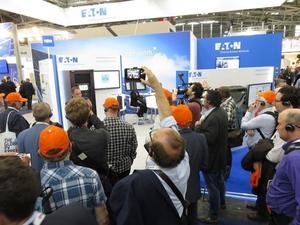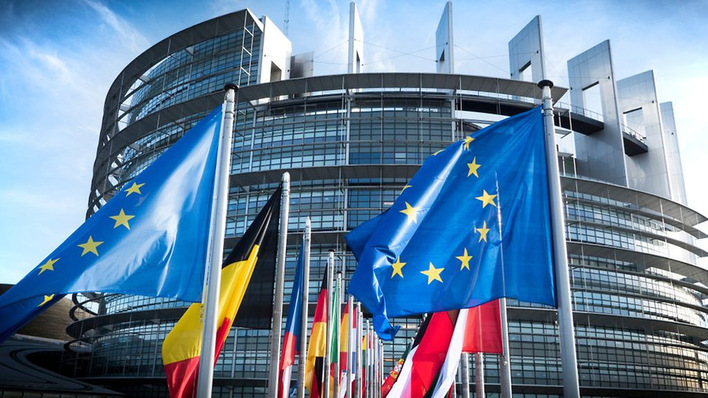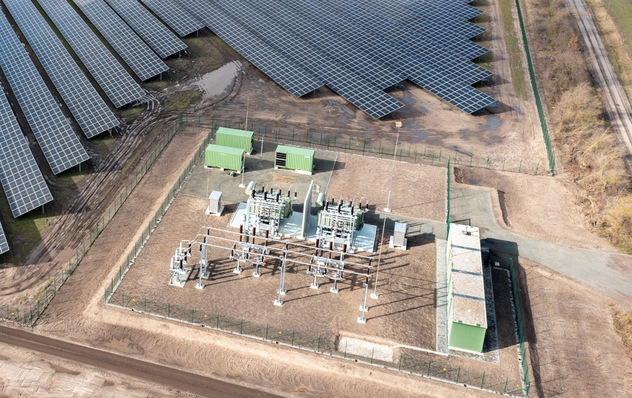According to a recent analysis from Delta-ee, the European energy storage market grew by 75 percent in 2018, which corresponds to absolute growth of over 1.2 gigawatts (GW). Further growth of 12% is expected for 2019. According to the most recent annual forecast from the market research company Bloomberg NEF (BNEF), the global energy storage market (excluding pumped hydro) will reach a cumulative capacity of 942 GW or 2,857 GWh by 2040, attracting 620 billion dollars in investments.
In Europe, the main areas of growth are domestic, commercial and industrial storage systems. Thomas Franken, Senior Director of International Marketing at Tesvolt, confirmed this trend: “ees Europe is the most important exhibition and the highlight of the year for us. We welcomed lots of visitors from all over the world at our booth and enjoyed valuable conversations – this also tells us that the demand for cost-efficient battery storage systems in commerce and industry is continuing to grow.” The German battery storage market is currently the third largest in the world after the USA and Australia – though China looks set to overtake both Germany and Australia in 2019. According to recent figures from the German Solar Association (BSW-Solar), 130,000 solar storage systems are currently operating in Germany alone, 40,000 of which were installed in 2018.
ees Europe showcases every aspect of storage technologies
Energy storage technologies are becoming increasingly diverse and thereby developing into key technologies for the energy transition, as they decouple generation and consumption with ever greater efficiency and stabilize power grids. More and more of our power is being generated from renewable sources, which is driving demand for storage devices and systems of all sizes. This is reflected in the diverse range on offer at ees Europe 2019. Take, for example, the company SENEC, an EnBW subsidiary that has sold 18,000 storage systems and is one of the leading German suppliers of innovative energy and storage solutions.
Jaron Schächter, Managing Director of SENEC, says: “ees Europe is the most important event of the year for us. We do good business here. This year, we are presenting our partners and friends with new storage systems as well as our full range for solar self-sufficiency.”

As always, new storage systems also played an important role at ees Europe. For example, Proton Motor has developed a means of combining energy storage with polymer electrolyte membrane fuel cell systems. Proton Motor recently signed a collaboration agreement with Škoda Electric a.s. for the development, sales and maintenance of fuel cell electric buses. “As a Cleantech Competence company, we offer our clients extensive expertise in integrating fuel cell modules into electrical systems,” says Manfred Limbrunner, Member of the Board at Proton Motor.
In total, around 470 suppliers of energy storage systems and technologies presented their innovative products, solutions and services to around 50,000 visitors. This year, the main focus was on the intelligent integration of storage devices into the energy system and the coupling of the electricity, heating and mobility sectors. Energy storage system production and power-to-X – the storage of electricity in other forms of energy such as hydrogen – were also in the spotlight at the exhibition. The atmosphere in Munich was dominated by the considerable momentum and huge growth of the European markets.
ees AWARD and ees Conference
The 2019 ees AWARD for pioneering products and solutions went to Blue Solutions SA, Enerox GmbH and Maschinenfabrik Reinhausen GmbH. The awards were presented at a ceremony which rounded off the first day of ees Europe. Blue Solutions SA won the prize for its LMP® (Lithium Metal Polymer) 250/400 rack, a modular, heat-resistant storage system. The panel of judges was impressed by the high level of safety and performance offered by this solution. LMP batteries do not contain liquid electrolytes and can be operated at up to 105° Celsius without the need for cooling. Enerox GmbH received the prize for the CellCube FB500-2000, a high-output storage device for solar parks and wind farms as well as self-sufficient building solutions and stand-alone grids. The CellCube storage system is one of the first in the industry to offer vanadium redox flow (VRF) batteries with a 1,000 volt DC range. The judges also commended the innovative business model of “electrolyte as a service,” which helps overcome the major investment cost barrier by driving capital costs below 300 euros per kilowatt hour. The third AWARD went to Maschinenfabrik Reinhausen GmbH for GRIDCON® PCS 4W, a variable storage inverter. Dubbing it the “Swiss army knife of inverters,” the judges noted its holistic approach to maximizing power quality. The central DC bus enables the connection of different loads and feeders such as various kinds of batteries and PV units. This means the device can be used in the construction of stable stand-alone systems for microgrid applications as well as convenient solutions for supplying emergency and back-up power.
From May 14–15, the ees Europe Conference offered a detailed supplementary program on international storage markets, presented new business models and explored the most important pioneering technologies. Key topics included quality assurance for stationary battery storage systems, opportunities for involving storage solutions in the e-mobility boom, and power-to-X technologies – the latter in cooperation with the event’s new partners Hydrogen Europe and Eurogas. Power-to-X opens up new opportunities for storage. As more of our power is generated from renewable sources, it’s important to use excess electricity in a meaningful way, for example by storing it as a different form of energy.
Forums – a practical way to consolidate key topics
The ees Forum presented contributions from the ees AWARD finalists as well as current topics and developments, from energy storage technologies which are profitable in the long term, to new business models for solar and storage or for commercial storage systems, to alternatives to lithium-ion battery systems. In addition, numerous start-ups introduced their business models and innovative products and services at the forum. The PV and Battery Production Forum was held in cooperation with PEM (Chair of Production Engineering of E-Mobility Components) at RWTH Aachen University and the German Mechanical Engineering Industry Association (VDMA). In the morning, the spotlight was on battery production — trends in technology, automation and process innovation. The topics ranged from energy-efficient processing technologies to a strong machine and plant construction sector with solutions for automated module and pack production, to the next generation of battery technologies. (HCN)
Stay informed, get our free newsletter twice a week. Register here







